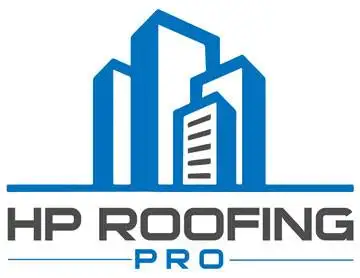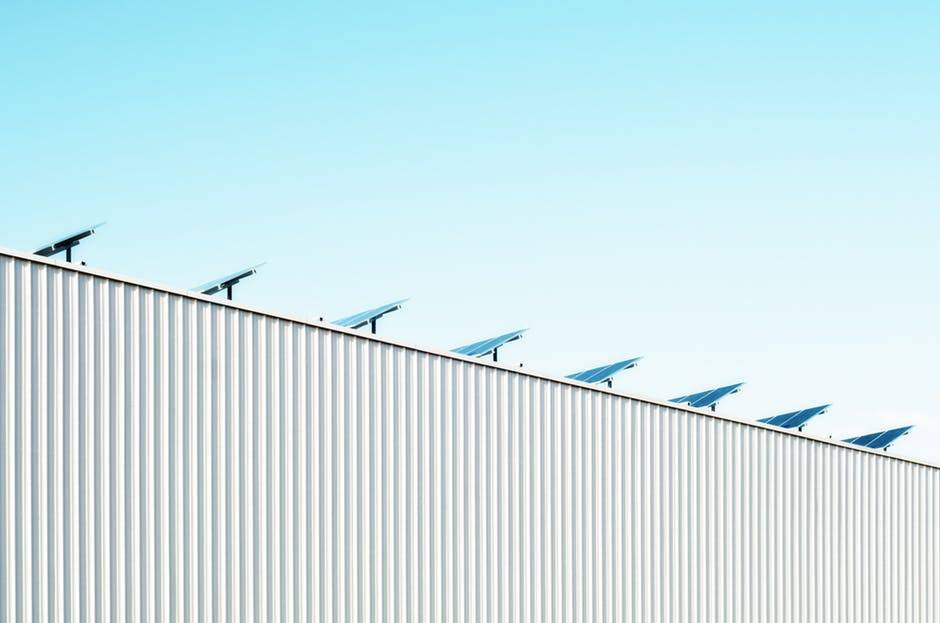Mon - Fri 7:00 am - 4:30 pm
601 South Palm Ave, Alhambra, CA 91803
Posted by thomas ferriere No Comments on The Future of Commercial Roofing: Innovations and Trends to Watch Roofing
The Future of Commercial Roofing: Innovations and Trends to Watch
From bold, futuristic visions of eco-friendly cities to solitary innovations, the roofing industry is changing. Roofs aren’t just what’s over your head anymore: Investment is ramping up and the metal roofing market is projected to grow to more than $33 billion by 2030. Roofing companies are embracing the change. They’re adapting fast and pushing the latest innovations to benefit their clients. And in this article, we’ll cover the latest commercial roofing trends to observe.
Key Commercial Roofing Trends To Keep an Eye On
Commercial roof designs are undergoing a renaissance, and it’s driven by a potent mix of three factors:
- The desire to stand out
- The changing climate
- New technologies
The leading trends in the industry are novel innovations across these areas.
Climate Proof Is Future Proof
Climate change isn’t a far-away threat anymore. It’s here and it’s already affecting businesses and communities across the globe.
Climate-proofing your commercial roofing will have to be done sooner or later. Most of the trends we’ve outlined in this article relate in some way to the changing climate.
The initial cost of investing in cool roofing, solar panels, and eco-friendly roofing materials is high when compared with alternatives. However, failing to invest now only results in a greater expense further down the line.
Solar Panels
The falling costs of solar commercial roofing are increasing the popularity of solar panels. Ideal for sunnier climates, solar panels provide two benefits to businesses looking to modernize:
- Solar panels generate electricity that cuts costs and can be sold back to the grid
- Installing solar panels affords businesses green energy tax credits
Federal solar tax credits in California expire soon, but it’s a reasonable bet they’ll be reissued around 2024 or 2025 to encourage the continued adoption of green energy solutions.
Solar Panel Integration
Solar panels have a distinctive look that some businesses find unappealing.
That’s why solar integration is growing in popularity. It’s a solution that integrates solar systems with the metal roofing itself. This both lowers the installation and maintenance costs and preserves the visual aesthetic of the roof.
And the cost of installation is only going to shrink as solar integration becomes the industry standard. In some states with restrictive planning laws, they’re also easier to get permission for because integrated panels provide a clean, sleek look.
Green Roofing
Sometimes called vegetative or eco-friendly roofing, green roofing involves covering a roof with vegetation. Fundamentally, green roofs provide two benefits to businesses.
Firstly, they demonstrate a commitment to sustainable futures, benefiting a company’s reputation. Vegetative roofs fight back against the loss of greenery in urban hubs. They show that a business puts its money where its mouth is and cares about the climate.
Secondly, green roofing improves energy efficiency by providing better insulation. They help to filter airborne pollution. They also reduce the urban heat island effect, which causes urban areas to be 1 to 7°F hotter than the surrounding countryside.
Built-up Roofs
Built-up roofs are a popular trend for commercial buildings in 2023 for a variety of reasons. Built layer-by-layer instead of having single sheet material, they’re more durable and longer lasting.
The extra layers help protect the from extreme temperatures and weather. In addition, built-up roofs can be customized to fit specific needs. They provide extra insulation, making them energy efficient, too.
They’re also easy to repair and maintain and can be customized to fit a variety of budget needs. All of these benefits make built-up roofs an attractive and increasingly popular choice for commercial buildings in 2023.
Cool Roofing
Cities like Los Angeles have started to experience brutal heat waves. Volatile temperatures are the new normal.
And in the face of that reality, cool roofing offers a number of advantages.
Cool roofing integrates materials that have a high thermal resistance index. That means they take longer to heat and can be cooled with lower energy requirements.
These factors make them beneficial to the environment. But cool roofing is also better for employee health and satisfaction. It can lower temperatures by up to 50°F, so it’s unsurprising that cool roofing solutions are more popular than ever in hot states.
Overall, cool roofing reduces costs by up to 30%. As technology continues to improve, it’s likely that the cost savings will only go up.
Synthetic Roofing
Synthetic materials aren’t out of the running yet. As many businesses turn to eco-friendly materials, others still prefer rubber and plastic for their durability and low cost.
To meet demand, research into low-maintenance synthetic roofing has ramped up in recent years. These roofs are lightweight, easy to install, and cost-effective. And to satisfy green initiatives, synthetic roofs use more recycled materials.
Single-Ply Membranes
Made of a single layer of flexible material (e.g. thermoplastic or thermoset), single-ply membranes are another highly temperature-resistant option on this list.
They’re ideal for future-proofing roofs against unpredictable weather patterns, making them an ideal long-term investment. Additionally, single-ply membrane roofs are watertight and offer superb energy efficiency. Able to reflect the sun’s rays, they keep buildings cooler, reducing (rising) energy costs.
Like built-up and metal roofing, single-ply roofs offer a higher fire rating than traditional materials. Installation is quick and cost-effective, making them reliable as an all-around solution.
Metal Roofing
Metals are cheap, reliable, and durable. Hybrid metal-solar or cool roofing solutions will become cheaper and more popular as time goes on, and they offer many benefits that contribute to the continued growth of the market:
- They’re naturally fire-resistant
- They require low maintenance
- They’re highly durable and weather-resistant
- They’re low-cost
Some older materials (e.g. asphalt) are banned across Europe because of how flammable they are. Metal won’t burn, withstands high temperatures, and maintains its integrity in the event of a fire.
In addition, modern metals are stable and secure. They won’t rust when the appropriate coating is applied, and those coatings come in a range of vibrant options.
Spray Polyurethane Roofs
Spray polyurethane foam (SPF) roofs are a modern roofing system made of a two-part liquid (foam) that’s sprayed on the roof surface. SPF roofs create seamless surfaces that are both waterproof and act as superior insulation. Able to last for up to 50 years, SPF roofing is a trend to keep an eye on, offering:
- Improved durability vs. other roofing
- Long-term energy savings
- Superior UV protection
- Resistance to extreme temperature changes
- Reduced air leakage
When applied correctly, SPF roofs create a seamless, monolithic surface that acts as an insulating and waterproof barrier. They are extremely durable and can last up to 50 years.
SPF roofs are also highly energy-efficient as they reduce air filtration and heat transfer as compared to traditional roofing materials. Additionally, SPF roofs are quick and easy to install and require minimal maintenance.
Colorful Roofing
The final trend we’re seeing in 2023 is for businesses to distance themselves from cold, sterile color schemes. Instead, commercial roof colors are growing vibrant. Bold color choices make companies stand out.
Business logos help to attract customers from far away – an important tactic as competition increases. New technologies, such as improved metal coatings, are driving the trend toward creative expression.
Modernize Your Commercial Roofing
The latest commercial roofing trends revolve around energy efficiency and modern aesthetics. Whatever your feelings on the warming climate, its effects are undeniable. Future-proofing your business will save you money in the long run.
At HP Roofing Pro, we help businesses in California modernize their roofing systems. From solar panel installation to cool roofing, we transform the vision of our clients into eye-catching projects. Click here to book an estimate.
Recent Posts
Categories
Recent Posts
Do you have any questions?
Contact us at The HP Roofing PRO office or submit a business inquiry online
Contact Us






